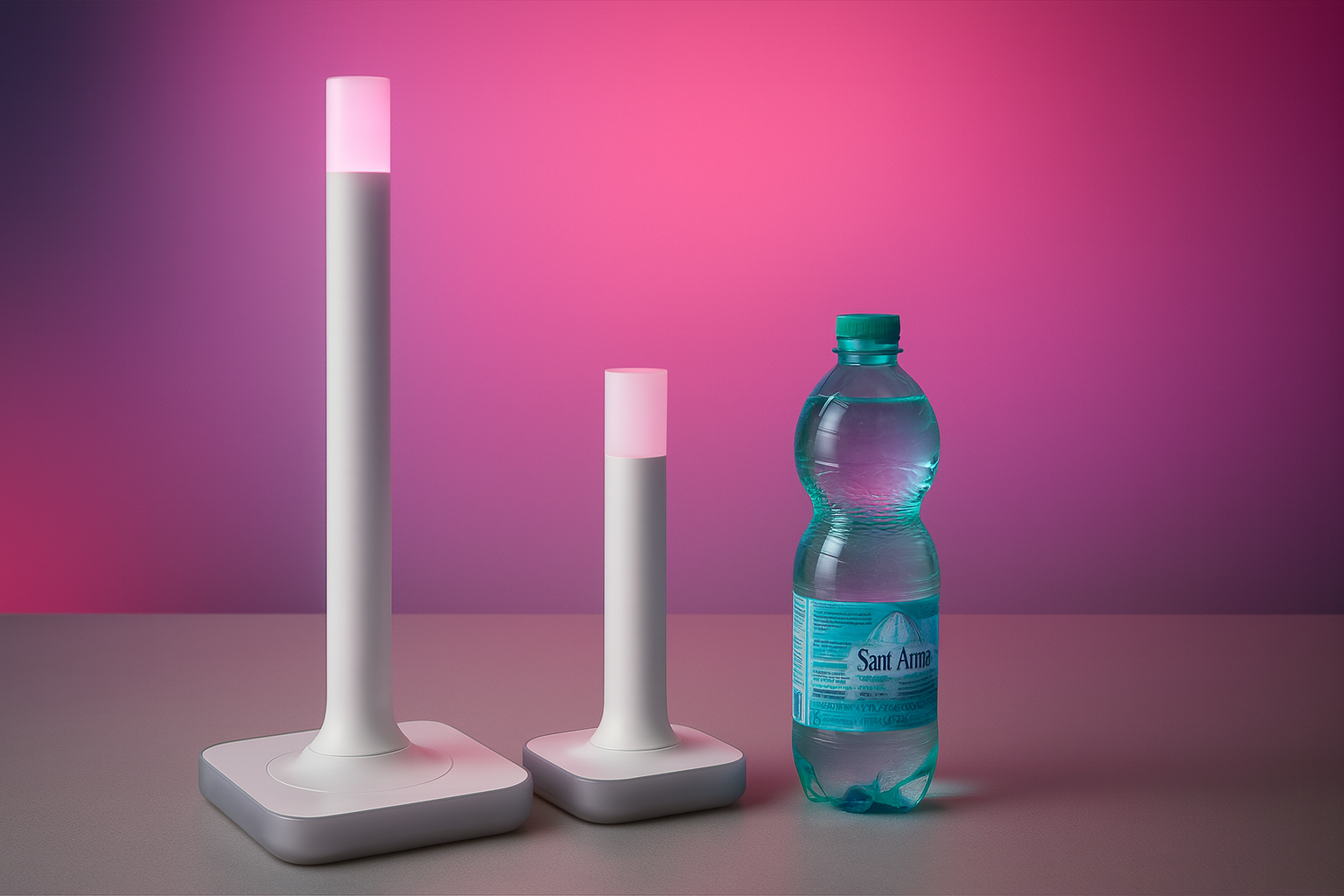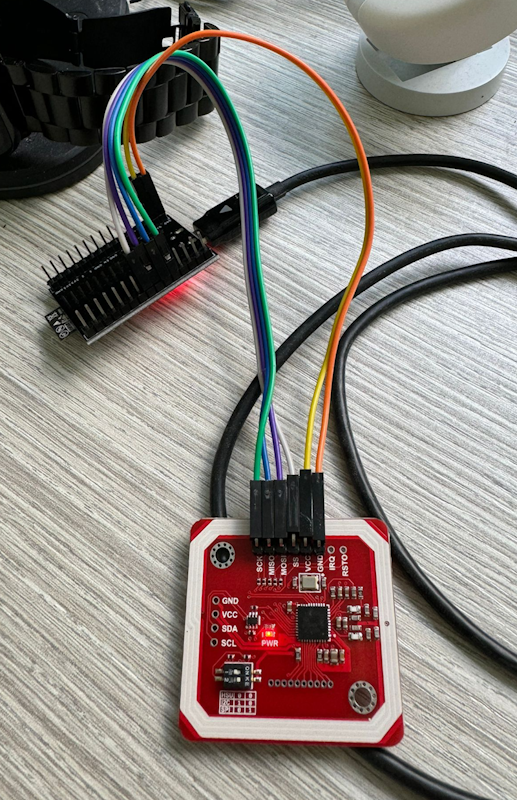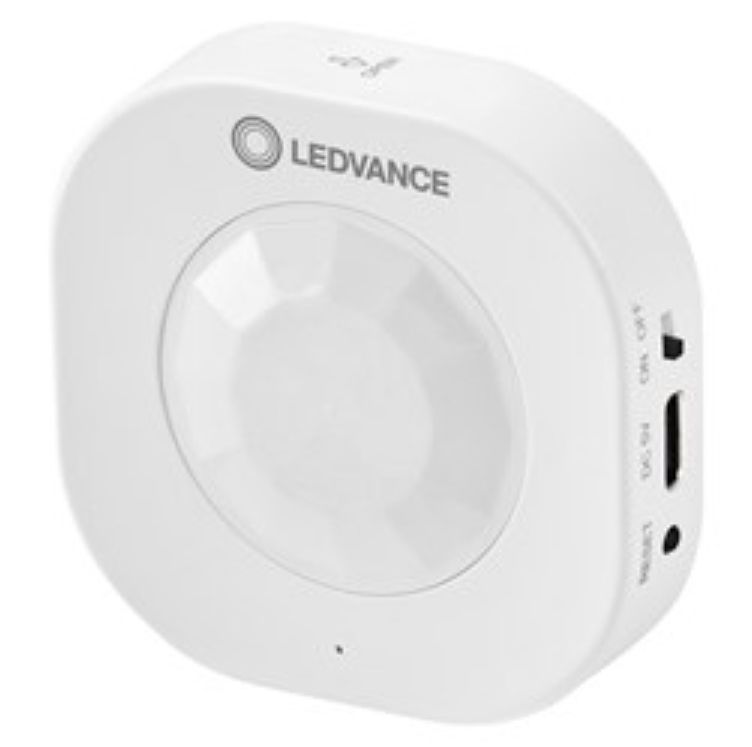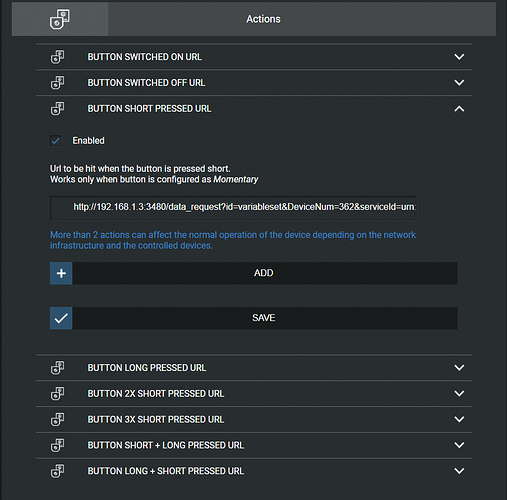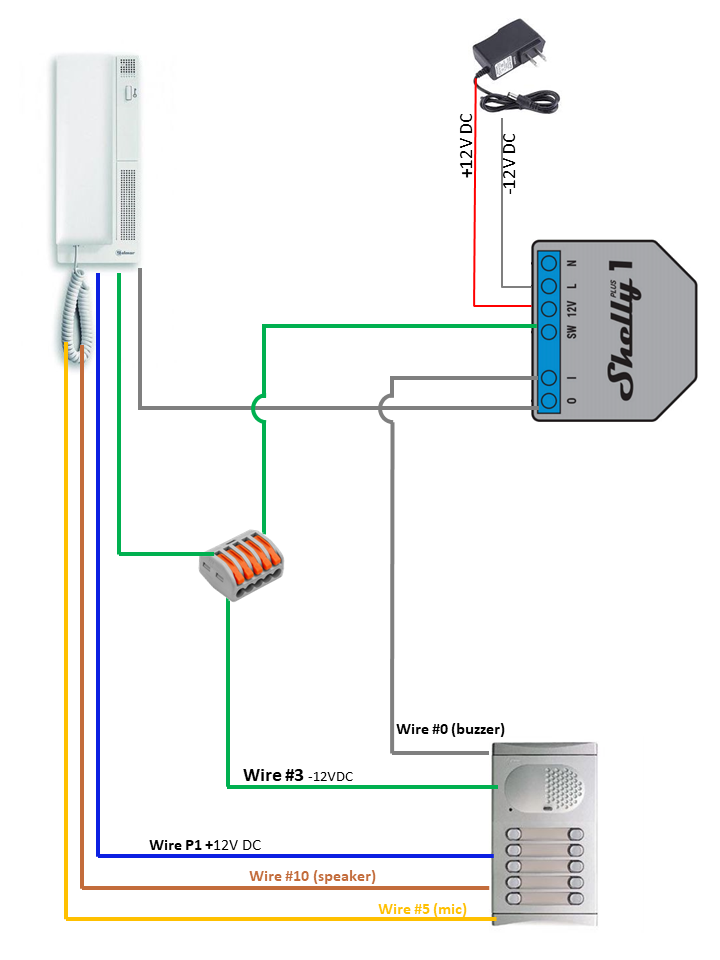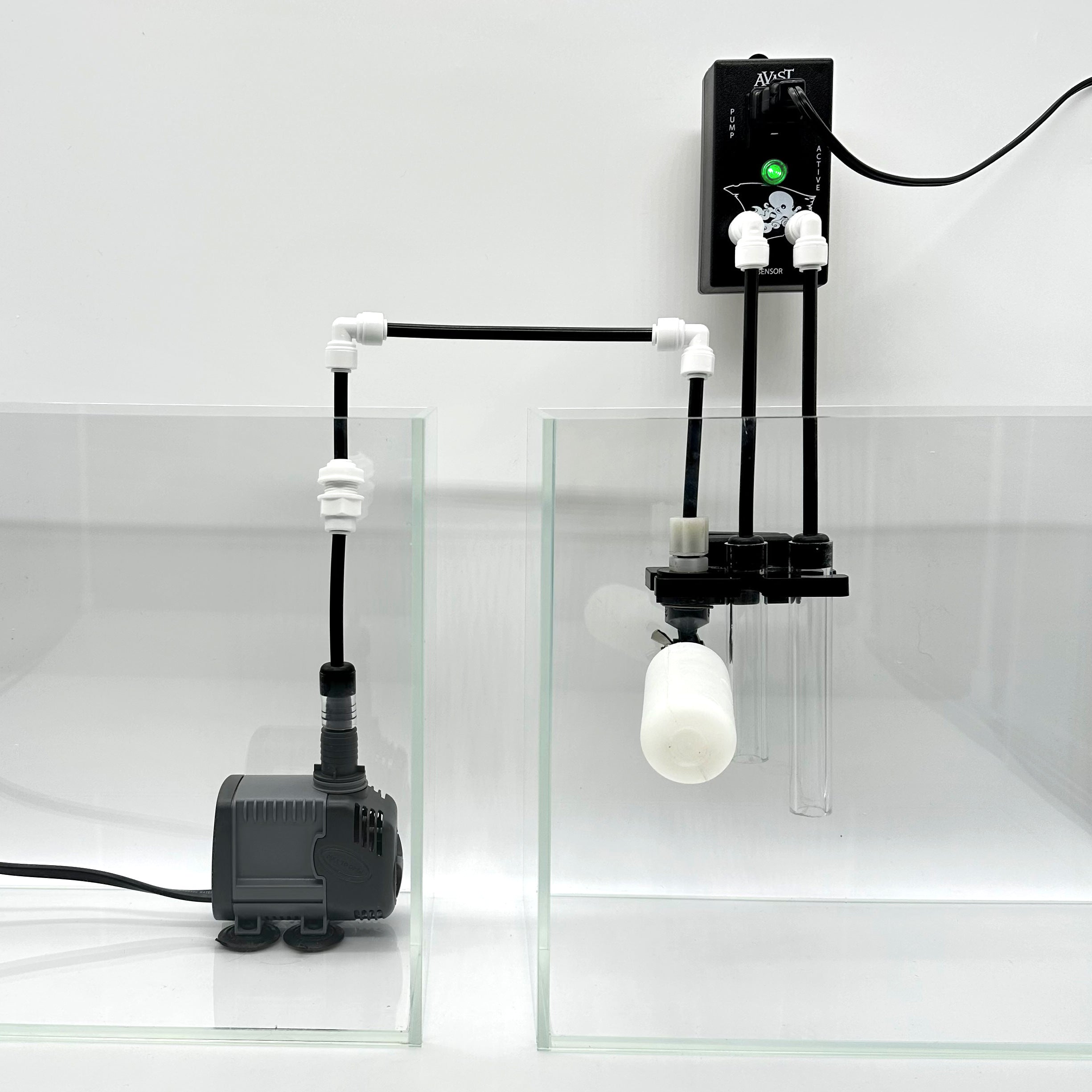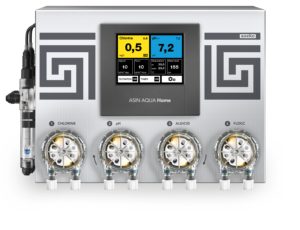Water level sensor
-
I'm in the middle of adding a water tank, because the latest summers were very hot and we had our water restricted, sometimes for weeks and for extended hours during the day (from 7 am to 5 pm).
It should be automatic, thanks to pressure sensors, so it will integrate water when needed (and the main line is open), switch the pump, etc. But I want to add a water level sensor nonetheless, to monitor it if necessary. I will probably just double this project and automate the pool refill as well, since I'm doing it manually at the moment.
I took a look and a lot of people are using Zunos, but I'm not sure I want to spend so much on a so simple system.
Pre-built solutions are OK. Thanks! -
Does it need to be analog or digital would suffice?
I remember years ago using an analog ultrasonic sensor for sensing liquid level from the top without having to immerse it. It would then be about sending that signal to zwave or any other wireless protocol. It was relatively cheap to do.If a digital level would suffice then 2 immersed water sensors would do? One for full and one for empty? Then I have a couple of such zwave water sensors. Since it is water and non corrosive it would probably be ok?
Ecolink has one:
Aeotec too:
-
yep. my first idea was to place 2/3 sensors, but I'll probably explore the ultrasonic way. I'm open to wifi (there's good coverage) and I still have a spare Fibaro smart implant (even if I had to remove one from my weather station, because it was unreliable and I had to frequently restart it - probably for heat).
I'll explore the ESP*+ultrasonic sensor route, even if I'm not very proficient with electronics. Thanks for the suggestion!
-
One option would be to use MySensors. This is a cheap way of adding various Arduino sensors to OpenLuup. You set up an Ethernet gateway and then each sensor is connected to the gateway wirelessly. There is a MySensors plugin that works in OpenLuup.
This looks like an interesting project, that you perhaps can get inspiration from: Round water tank level sensor
Good luck!
-
@akbooer said in Water level sensor:
What is used in car fuel tanks?
Usually it's a float with a rod, actuating a potentiometer. (variable resistor)
Not sure about the pressure sensor as it depends on the shape of the tank (how deep the tank is) and it will be exposed to atmospheric pressure variations. The advantage of the ultrasonic one is that it is non contact and won't grow stuff in the water. -
@akbooer said in Water level sensor:
What is used in car fuel tanks?
Usually it's a float with a rod, actuating a potentiometer. (variable resistor)
Not sure about the pressure sensor as it depends on the shape of the tank (how deep the tank is) and it will be exposed to atmospheric pressure variations. The advantage of the ultrasonic one is that it is non contact and won't grow stuff in the water.@rafale77 said in Water level sensor:
@akbooer said in Water level sensor:
What is used in car fuel tanks?
Usually it's a float with a rod, actuating a potentiometer. (variable resistor)
This
C
-
Two (high and low)of these(bare wire):
And two of these:
Ecolink Intelligent Technology Z-Wave Easy Install, Battery Operated, Door/Window Sensor, White & Brown (DWZWAVE2-ECO) https://www.amazon.com/dp/B00HPIYJWU/ref=cm_sw_r_cp_api_i_3Je6Eb7ECMY2VAnd bob’s your uncle
|-<:) -
I like to keep thing simple so i would go with a float switch.
One other thing in the UK we do not store drinking water, the only water storage in the uk is for filling baths and toilets. Do you intend to attach this tank to your drinking water pipes/tapes? -
One option would be to use MySensors. This is a cheap way of adding various Arduino sensors to OpenLuup. You set up an Ethernet gateway and then each sensor is connected to the gateway wirelessly. There is a MySensors plugin that works in OpenLuup.
This looks like an interesting project, that you perhaps can get inspiration from: Round water tank level sensor
Good luck!
@ArcherS thanks for the input. I have various WiFi devices around the house, so I’ll probably add another one. I’ll go with MQTT, since I have a bridge to Vera I use to bridge other devices (tasmota, Sonoff, my own).
Thanks anyone for the suggestion. Now to find some pre built device template to borrow.
-
I like to keep thing simple so i would go with a float switch.
One other thing in the UK we do not store drinking water, the only water storage in the uk is for filling baths and toilets. Do you intend to attach this tank to your drinking water pipes/tapes?@Elcid yep, it’s allowed to drink, via chemicals to be added every now and then. I successfully intercepted the alert the public water company is dispatching, so maybe I can empty/fill on demand.
I was exploring a UV based solution too, but I want to start easy. I will probably add this and automate everything in the future.
-
that's correct. the water needs to be refreshed often and never stay in the tank (if you're not correcting it with chemicals - that's a small capsule intended for drinking water consumption).
since it's hot here during the summer and the water pipes are public, there's a lot of leaks and the water is never enough (to be honest, I'm living in a zone with lots of water, but we're exporting to neighbor regions as well). so, this kind of implant is very common, from houses to restaurants, etc.
these thanks are UV resistant, can handle -40/+60° C and is algae/mold proof. they're specifically intended for drinking water.
my house implants were already done when I bought it, so I had to use the current configuration, but it's becoming common to separate toilets pipe/garden pipes and use rain or a pump to get non-drink water. I guess you can make it more complex if you want, as with everything
-
Best to shade tank from sun and keep it as cool as possible to, even if the tank is uv proof, the cooler the water the better.
-
So, after consulting with a friend into NodeMCU, I'm going for
- NodeMCU esp8266 (flashed with Tasmota, so MQTT)
- JSN-SR04T Waterproof Ultranosic Distance sensor
I will probably write a MQTT to openluup bridge, if time allows. I'm getting a couple from Amazon, and tons from AliExpress for further projects. I will probably consolidate my weather station and place a couple of addition temperature sensors across the house.
I'll probably order other sensors, just to experiment. -
@prophead since I'm not that good into soldering, I always choose plug&play projects

I already have a couple of Tasmota devices: one to monitor temperature in my pool and one for humidity in my open space, to trigger a dehumidifier (large windows, helpful during the winter) and they're quite plug&play, after you've flashed Tasmota.You can poll data easily, thanks to their API (I developed my virtual devices plug-in for this) or integrate real-time change notification with MQTT, or use both. I have MQTT with a custom C# app bridging to virtual devices.
The only problem is they are Wi-Fi based, so I don't want to have too many, because I really prefer Z-Wave and its mesh topology. But they're cheap and can be integrated with every sensor on the planet, quite easily.I'll probably build a prototype next week and I'll report back.
-
I am building a infinityppool to a customer and I use a Pressure-type level sensor #12086 https://www.youtube.com/watch?v=DCe_wYQ_BC0

